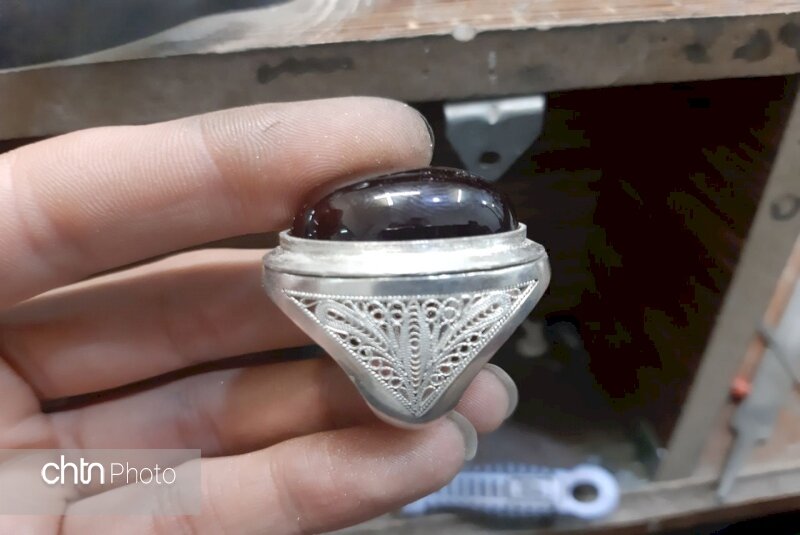Zanjan seeks to export handmade rings to Oman, Bahrain

TEHRAN – The west-central Iranian province of Zanjan plans to export handmade rings and some semi-precious stones to Oman and Bahrain, the provincial tourism chief has announced.
The province’s handmade silver rings adorned with agate, turquoise, or semi-precious stones have been able to catch the attention of customers throughout the country and beyond, Amir Arjmand said on Monday.
Silver metal has a high resistance, but it is the perseverance and effort of the craftspeople to make the silver ornamental metal, which can make the art of ring-making in Zanjan province so admirable, the official added.
There is only one way out of the suitcase trade (allowed for customs-free, tax-free transfer) and that is to end the coronavirus crisis and to hold exhibitions in the candidate countries, he noted.
Such exhibitions can be held with the presence of local artists so that the province and the country can benefit, he explained.
He also mentioned that the province has the most handicraft artists working in ring making, with 171 craftsmen working in 150 workshops.
Last year the official announced that the province is planning to export handmade daggers, swords, and filigrees to Oman to escalate handicraft trade with the neighboring Sultanate.
Zanjan, which was designated as a “world city of filigree” in January, has excellent capacities in the production and export of handmade handicrafts to neighboring countries, Amir Arjmand said.
To prepare the ground, handicrafts showrooms and workshops should be held in Oman to promote the handmade products as well as expand the cultural ties, the official added.
In April 2020, the Arjmand announced that handicrafts exports from Zanjan province reached some $1.2 million during the Iranian calendar year 1398 ((March 2019 to March 2020).
Iraq, Kuwait, Qatar, Azerbaijan, Oman, and some European countries were the main importers during the period, he explained.
“Zanjan’s handicraft products are a source of income, employment, and development for the province, as well as a great opportunity to enter global markets,” he added.
Knifemaking is one of the oldest handicrafts practiced for centuries in several Iranian cities, of which the northwestern city of Zanajn is the most famous.
Knives, swords, and daggers were produced and a lot of knife-making workshops were active in these cities. But due to their design, cut, diversity, and durability, Zanjan knives have been the most successful.
Filigree consists of curling, twisting, or plaiting fine, pliable metal threads and soldering them at their points of contact with each other with metal groundwork.
With 14 entries, Iran ranks first globally for the number of cities and villages registered by the World Crafts Council, as China with seven entries, Chile with four, and India with three ones come next.
The value of Iran’s handicrafts exports stood at $120 million during the first eleven months of the past Iranian calendar year 1399 (March 20, 2020 – February 18, 2021), Mehr reported. The country’s handicrafts exports slumped during the mentioned months in comparison to the same period last a year earlier due to the damage the coronavirus pandemic has inflicted on global trade.
The Islamic Republic exported $427 million worth of handicrafts during the first eleven months of the calendar year 1398. Of the figure, some $190 million was earned via suitcase trade (allowed for customs-free and tax-free transfer) through 20 provinces, according to data compiled by the Ministry of Cultural Heritage, Tourism and Handicrafts.
Ceramics, pottery vessels, handwoven cloths as well as personal ornamentations with precious and semi-precious gemstones are traditionally exported to Iraq, Afghanistan, Germany, the U.S., the UK, and other countries.
ABU/AFM
Leave a Comment